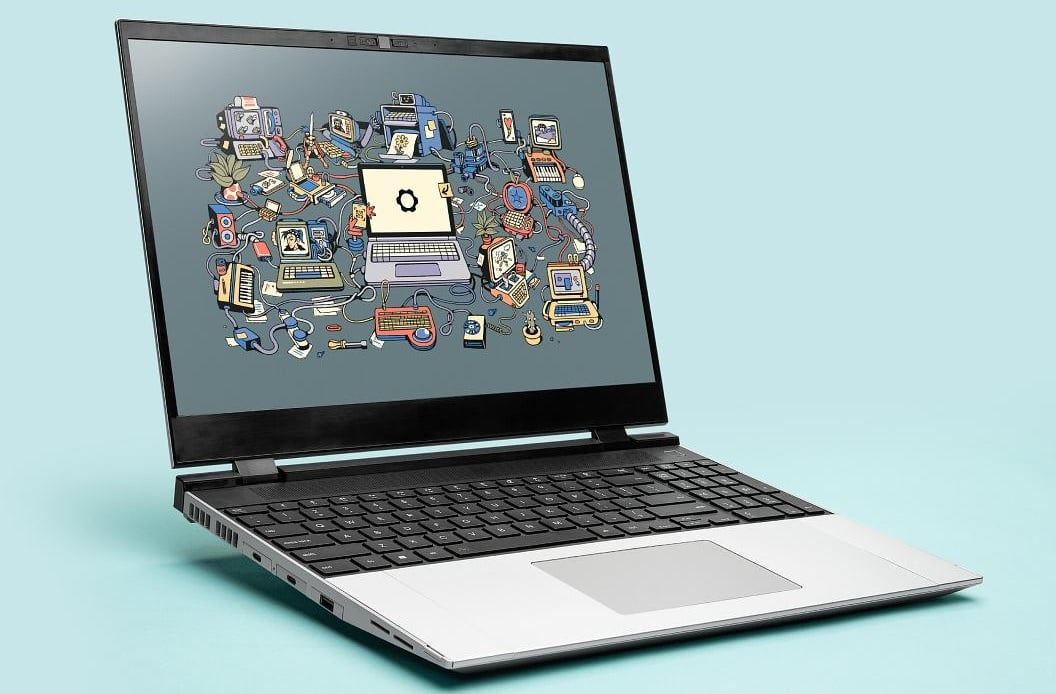Framework Laptops Get Modular Makeover With RISC-V Main Board

Ubuntu Summit The modular Framework laptop is moving outside the x86 world with a RISC-V main board now available.
Framework CEO Nirav Patel had one of the bravest tech demos that we've seen at a conference yet – modifying a Framework Laptop from x86 to RISC-V live on stage. In the five-minute duration of one of the Ubuntu Summit's Lightning Talks, he opened up a Framework machine, removed its motherboard, installed a RISC-V-powered replacement, reconnected it, and closed the machine up again. All while presenting the talk live, and pretty much without hesitation, deviation, or repetition. It was an impressive performance, and you can watch it yourself at the 8:56:30 mark in the video recording.
(At the end of the talk, you can just about make out the dulcet bellow of The Reg FOSS desk asking to see the board-swapped machine being turned on.)
Now DeepComputing is taking orders for the DC-ROMA board, at least to those in its early access program. The new main board is powered by a StarFive JH7110 System-on-Chip. (Note: there are two tabs on the page, for both the JH7110 and JH7100, and we can't link directly to the latter.) CNX Software has more details about the SoC.
Although the SoC has six CPU cores, two are dedicated processors, making it a quad-core 64-bit device. The four general-purpose cores are 64-bit and run at up to 1.5 GHz. It supports 8 GB of RAM and eMMC storage. We did in fact drop by the company's stand, as invited by the MC, to try out a different laptop with the same SoC, running the latest release of Ubuntu with GNOME.
It runs, it works, and even high-definition video playback is smooth, but this is not a powerhouse CPU. The machine we tried was sluggish and not very responsive. Even playing a single YouTube video, CPU utilization in the System Monitor was pretty high, and it was working hard when we tried moving the video window around. Minimizing it did reduce the CPU burden, though. Aside from video decoding, the machine felt less responsive than our old Raspberry Pi 3, to pick a more familiar example. In our opinion, RISC-V is not yet competitive with Arm in performance.
However, this is a real, usable, general-purpose computer, based on an open instruction set. That's no mean feat, and it's got more than enough performance for less demanding work.
- RISC-V reaches milestone with RVA23 profile ratification
- Framework starts taking orders for 16-inch repairable, upgradeable laptop
- Fresh models of Framework modular laptops in the works
- Repairability champ Framework's modular laptop gets a speed boost
It's also the first third-party main board for the Framework hardware, which is another welcome achievement. The company has now delivered several new generations of hardware, including a 16-inch model, and continues to upgrade its machines' specs.
It's a little too thin and light for this vulture's personal preferences, but we know a few owners personally, and they love the devices. While we were at the company's stand, we asked Patel if the machine he'd been working on did in fact turn on, and he assured us it did. We also mentioned our desire for a keyboard with more travel and better feel, and he pointed us at a project that's trying to fit a classic ThinkPad keyboard into the larger model, which very much appeals.
More modular and user-repairable laptops, please. Especially if they have space inside for better keyboards. But for now, unless an Arm-based CPU with Apple-level performance should become available, we would be happier with an Intel or AMD processor, thanks. ®
Bootnote
During our chat with Canonical founder Mark Shuttleworth at the summit, we were amused to note that he too refers to the architecture as "risk-vee" as opposed to "risk five."
We favor that ourselves, as there already was an architecture called RISC-5, which was designed [PDF] by the late great Niklaus Wirth and entirely separate from Berkeley's similarly named project.
From Chip War To Cloud War: The Next Frontier In Global Tech Competition
The global chip war, characterized by intense competition among nations and corporations for supremacy in semiconductor ... Read more
The High Stakes Of Tech Regulation: Security Risks And Market Dynamics
The influence of tech giants in the global economy continues to grow, raising crucial questions about how to balance sec... Read more
The Tyranny Of Instagram Interiors: Why It's Time To Break Free From Algorithm-Driven Aesthetics
Instagram has become a dominant force in shaping interior design trends, offering a seemingly endless stream of inspirat... Read more
The Data Crunch In AI: Strategies For Sustainability
Exploring solutions to the imminent exhaustion of internet data for AI training.As the artificial intelligence (AI) indu... Read more
Google Abandons Four-Year Effort To Remove Cookies From Chrome Browser
After four years of dedicated effort, Google has decided to abandon its plan to remove third-party cookies from its Chro... Read more
LinkedIn Embraces AI And Gamification To Drive User Engagement And Revenue
In an effort to tackle slowing revenue growth and enhance user engagement, LinkedIn is turning to artificial intelligenc... Read more

